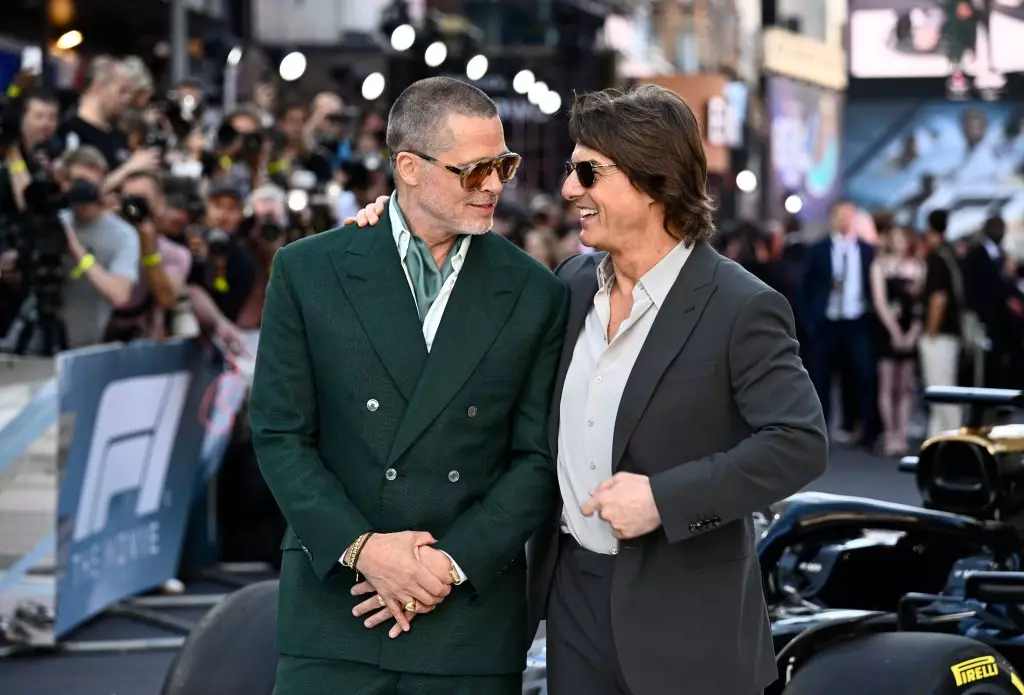In the realm of high-octane storytelling and real-world racing aspirations, Hollywood’s fascination with motorsports often keeps enthusiasts on the edge of their seats. Yet, behind the scenes, many projects teeter on the brink of realization, only to falter due to logistical or creative roadblocks. The saga involving Brad Pitt, Tom Cruise, and the elusive “Ford v Ferrari” sequel exemplifies this tension. Despite shared ambitions and star power, stellar potential often remains unrealized, revealing Hollywood’s own complex relationship with authenticity, budget constraints, and star-driven narratives.
What’s striking—and perhaps underappreciated—is how actors tether their personal dreams to such projects. Pitt’s candid reflections about his desire to play Ken Miles highlight a personal passion that extends beyond mere fame. Similarly, Cruise’s initial enthusiasm for the film underscores how genuine interest from Hollywood’s biggest icons fuels expectations of a grander motorsport cinematic universe. Yet, these aspirations are often thwarted by studio budgets and shifts in direction, shaping an industry where even the most promising ventures must navigate a labyrinth of corporate interests and creative compromises.
Reality Check: The Financial and Creative Hurdles That Shape Motorsport Films
The failure of the original “Ford v Ferrari” to spawn a sequel, despite its critical and commercial success, underscores the fragile nature of such projects. Director Joseph Kosinski’s admission regarding studio objections to budget underscores a vital truth: spectacle on the track comes at a price. Motorsport movies inherently demand high production costs, from authentic racing sequences to compelling character development, making studios cautious about overextending financially.
Moreover, the narrative focus of these films tends to be dictated by visionaries like Kosinski, who understand that stunts and speed are only part of the package. Storytelling depth—such as highlighting rivalry, redemption, and human resilience—must be balanced carefully to justify the expense. That balance, often elusive, frequently tips in favor of safer commercial bets, sidelining projects with bold, authentic storytelling in favor of proven formulae. It is here that individual star aspirations clash with economic realities, preventing many projects from reaching the starting line.
The Power of Authenticity and Personal Passion in Motorsport Filmmaking
Despite setbacks, the passion of star actors and filmmakers remains palpable. Brad Pitt’s openness about wanting to return to a racing setting reveals how deeply personal these projects are—beyond the pursuit of box office or awards. His desire to emulate the excitement of racing underscores a broader truth: motorsport storytelling appeals because it embodies human courage, risk, and unrelenting pursuit of excellence.
This sentiment becomes even more vital when considering the current momentum behind “F1 The Movie,” where collaboration with Formula 1 and its teams signals a new dawn for authenticity and realism. The integration of real teams and drivers adds layers of credibility that were once missing from Hollywood motorsport dramas. In this environment, the line between fiction and reality blurs, creating a more immersive experience for audiences who crave adrenaline and authenticity in equal measure.
The Future of Motorsport Films and the Role of Fan Engagement
While delays and compromises have historically hampered the realization of big-screen motorsport epics, the landscape is evolving. The advent of streaming platforms, increased collaboration with racing bodies, and a shift toward more authentic storytelling open new avenues. Upcoming projects, like the potential sequel to the F1-centered film, hint at a future where passion and practicality coalesce into compelling narratives.
Crucially, fan enthusiasm remains a potent catalyst. Audiences today are more engaged and informed than ever, demanding not only high-octane spectacle but also genuine storytelling. Filmmakers and studios that embrace this shift—prioritizing real racing, character authenticity, and collaborative efforts—stand to redefine how motorsport is portrayed in visual media. The potential for crossover appeal is immense, leveraging star power, technological advancements, and global racing fanbases.
Ultimately, the stories of actors like Brad Pitt and Tom Cruise reveal that behind Hollywood’s glamorous veneer lies an industry striving to balance aspiration with pragmatism. As interest in motorsports intensifies and storytelling technology advances, the possibility of fully realized, authentic racing films becomes more tangible. The real race, perhaps, is not just on the track but in the industry’s willingness to invest in genuine stories—fuelled by passion, driven by innovation, and designed to capture the hearts of racing fans worldwide.

